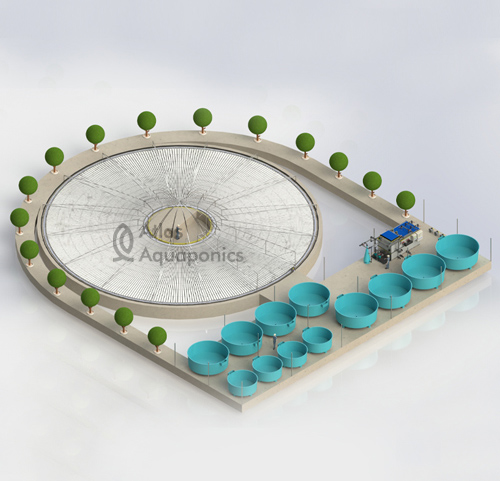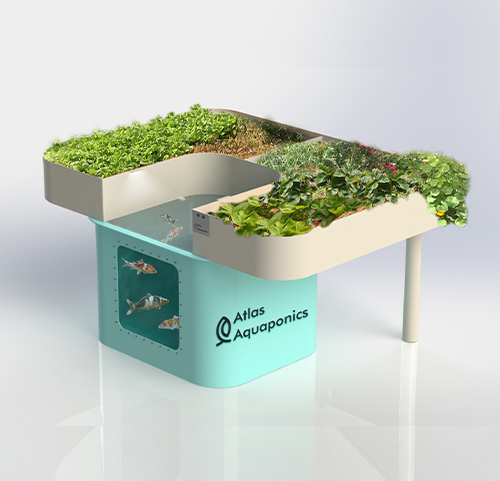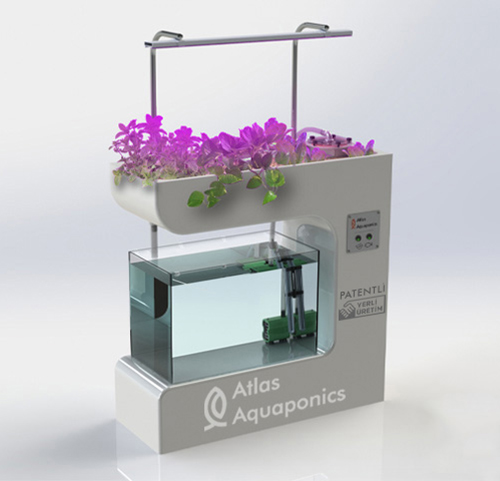Exploring New Fish and Plant Species for Aquaponics
How Biodiversity Can Transform Your Aquaponic Ecosystem
Aquaponics has always been about balance. A quiet harmony between fish and plants, where waste becomes nourishment, and water is recycled in a beautiful closed loop. But something exciting is happening in the world of aquaponics—growers are beginning to look beyond the usual tilapia and lettuce duo. They’re experimenting, diversifying, and unlocking entirely new possibilities by introducing exotic fish and rare plant species into their systems.
This shift toward greater biodiversity isn’t just a passing trend. It’s a smart, forward-thinking move that brings new life, resilience, and market potential to aquaponic farming. Whether you’re growing on a rooftop in the city or running a commercial greenhouse, exploring new species can breathe fresh energy into your setup.
Let’s take a closer look at how this evolution is unfolding—and what it could mean for your aquaponic journey.

Why Biodiversity in Aquaponics Is More Than Just Variety
When we talk about biodiversity, we’re talking about more than just adding a few new fish or trying out a different plant. It’s about creating a healthier, more resilient ecosystem. One where different species support one another, balance the water chemistry, and offer layers of productivity that go far beyond single-species systems.
A diverse system can better withstand stress. If one plant underperforms due to weather changes or nutrient shifts, others may continue thriving. If a fish species becomes susceptible to disease, others may remain stable. This interwoven web of life is nature’s own model of stability—and aquaponics is finally catching up to that wisdom.
Rethinking the Fish: Beyond the Usual Suspects
For many, aquaponics begins with tilapia, koi, or goldfish. These fish are hardy, easy to manage, and ideal for beginners. But what if your system could do more? What if it could raise species that open doors to gourmet markets, offer ecological benefits, or simply make your tank more vibrant and alive?
Some growers are now raising fish that double as both a protein source and a market specialty—like barramundi, known for its clean, buttery flavor and adaptability to recirculating systems. Others are going ornamental, keeping species like colorful guppies or vibrant tetras, which are in high demand in the aquarium trade.
Then there are growers experimenting with crustaceans and bottom-dwellers—species like red claw crayfish—that make use of space others don’t occupy. These creatures help clean up leftover feed and bring new income potential, especially when sold live to specialty markets or restaurants.
The key to success here is understanding your system’s unique environment. Every species you add has its own temperature comfort zone, feeding habits, and oxygen needs. But with careful planning and a bit of curiosity, you’ll find there’s a world of aquatic life ready to join your ecosystem.
Plants That Go Beyond Lettuce: The Rise of the Exotic Greenhouse
Lettuce, basil, mint—these staples have long been the go-to plants for aquaponics. They’re reliable, easy to grow, and well-suited to systems with steady nutrient flow. But today’s growers are going further, cultivating everything from medicinal herbs to climbing tropical greens and even gourmet root crops.
Imagine growing wasabi, a notoriously finicky plant that thrives in cool, flowing water. Or perhaps Malabar spinach, a lush, heat-loving vine that produces thick, nutrient-rich leaves even when other greens wilt under the sun. In shaded corners of the system, some growers are experimenting with watercress, a fast-growing herb that adds peppery zing to salads and sandwiches.
Others are tapping into the spice market, raising turmeric and ginger in media beds. These roots develop slowly but steadily, drawing from the nutrient-rich environment without overwhelming the system. They bring not only value at harvest but also a story—one of sustainability, flavor, and innovation.
What’s truly fascinating is how different plant species influence the system itself. Some consume more nitrates, others regulate pH through their uptake patterns. The more you diversify, the more balanced your ecosystem becomes, almost like a natural forest stream—alive with variety and self-correcting dynamics.
Things to Keep in Mind Before You Diversify
As exciting as it is to explore new species, it’s important to take your time. Every addition to your system, whether plant or animal, affects everything else. Success comes from observation, patience, and adaptation.
Start with a clear goal: are you growing for personal variety, market appeal, or ecosystem stability? Once you know your “why,” the “what” becomes easier to decide.
Be mindful of environmental needs. Not every exotic plant likes wet roots all the time. Some fish prefer cooler water, others demand warmth and higher oxygen levels. Your job as the grower is to create a space where each living thing can do what it does best, without throwing off the balance.
Quarantine new fish. Rinse new plants. Watch for shifts in water clarity, nutrient levels, and behavior. It’s like learning to listen to your system. The more tuned in you are, the more your system will thrive.
And don’t forget local regulations. Some species—especially exotic fish or protected plants—may require permits or be restricted altogether. Do your homework and stay compliant.
Embracing the Future of Aquaponics One Species at a Time
The world is changing. Climate pressures, food security, and consumer demand are pushing agriculture to evolve. Aquaponics has always offered a solution—but now, with greater biodiversity, it’s offering a revolution.
By carefully selecting new aquaponic species—both fish and plants—you’re not just enhancing your system. You’re creating a miniature ecosystem that mimics the complexity and beauty of the natural world. One that’s more resilient, more productive, and more rewarding to run.
At Atlas Aquaponic, we believe the future lies in these biodiverse systems. Systems that aren’t afraid to experiment. Systems that embrace the exotic, the unusual, and the underutilized. Systems that feed communities while restoring balance to how we grow our food.
So if you’re ready to move beyond the basics—if you’re curious about what’s possible—this is your invitation to explore.
Want help designing a biodiverse aquaponic system?
Get in touch with us at Atlas Aquaponic. We’re passionate about helping growers unlock the potential of their systems, one plant and one fish at a time.



